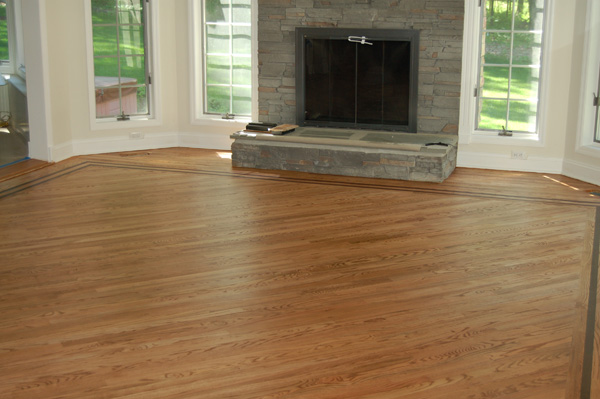
Wood Flooring Types And Prices
Wood flooring is arguably the most popular flooring type, becoming increasingly so in recent years. Its natural organic appearance, vast species, colour and grain variations make it a versatile complement to almost any room design. This ever growing popularity has lead to the rise in new wood flooring types, most notably 'Laminate Flooring'. Despite some reservations amongst purists, laminate flooring is a cost effective alternative to real wood flooring, and in fact, has a few advantages in comparison to real wood, the most significant of which is durability.
The outer layer consists of cellulose paper bearing a photographic image of wood which has been impregnated with melamine resin; the resultant material is very tough and offers high impact resistance; it is actually more than ten times tougher than natural hardwood. Laminate floors do not fade or tarnish as they resists ultra violet light, and so, retain a freshly laid appearance. One notable attraction to this type of flooring is the ease by which it can be fitted. Typically, laminate flooring systems are glueless and floating (they do not require fixing to the sub floor beneath,) instead, they rely on a system of interlocking tongues and grooves to form a solid mass. When fitted, a gap is retained around the perimeter of the floor to allow it to expand and contract at its natural rate.
The outer layer consists of cellulose paper bearing a photographic image of wood which has been impregnated with melamine resin; the resultant material is very tough and offers high impact resistance; it is actually more than ten times tougher than natural hardwood. Laminate floors do not fade or tarnish as they resists ultra violet light, and so, retain a freshly laid appearance. One notable attraction to this type of flooring is the ease by which it can be fitted. Typically, laminate flooring systems are glueless and floating (they do not require fixing to the sub floor beneath,) instead, they rely on a system of interlocking tongues and grooves to form a solid mass. When fitted, a gap is retained around the perimeter of the floor to allow it to expand and contract at its natural rate.

When you are in search of the perfect flooring for your home, you may want to consider getting hardwood floors. Most types of hardwood flooring complement virtually any home or architectural design. Before settling on just any one type of hardwood floor, however, it will be best to ascertain all the pros and cons of each type. This way, you'll know that the one you eventually choose blends in with your surroundings, as well as meets your requirements in floors.
There are, at present, five popular types of hardwood floors. The most popular one is the pre-finished type. Easy to find and even easier to install, all you need is to find wood flooring grain or finish that matches or complements your home. To install pre-finished hardwood floors, simply lay the panels down and cut the ends as necessary to fit the length of a room.
There are, at present, five popular types of hardwood floors. The most popular one is the pre-finished type. Easy to find and even easier to install, all you need is to find wood flooring grain or finish that matches or complements your home. To install pre-finished hardwood floors, simply lay the panels down and cut the ends as necessary to fit the length of a room.





Wood Flooring Types And Prices
